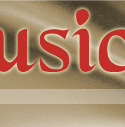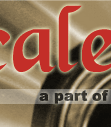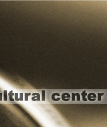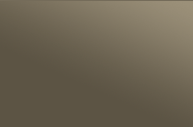
"Saint John Chrysostom" | "Pyotr Il’yich Tchaikovsky, 'Cherubikon'" | ΕΛΛΗΝΙΚΑ

"Liturgy of Saint John Chrysostom Op. 41by Prof. Dr. Lydia Korniy
National Academy of Music, Kyiv, Ukraine
Tchaikovsky's first work for the church - the Liturgy Op. 41 was composed in Ukraine and had its first performance there. He started it in May 1878 in Kamianka (Kamianets in the Cherkassy region of Ukraine) where his beloved sister Oleksandra lived, and completed it in July of the same year at Brailov, near Vinnytsia, at the country estate of his patroness Nadezhda von Meek.
While working on the Liturgy Tchaikovsky visited the fine ancient churches of Kiev and listened to their choirs: he could not have escaped their influence. In his letter of 12th June, 1878 to Nadezhda von Meek he wrote: "Yesterday morning I was in Podil (lower Kyiv) and attended a service at the Bratsky Monastery. I was so impressed by the lovely church and by the extraordinarily beautiful service. When you are present at such a service you begin to understand the power of religion for the masses."
Ukraine played an important role in the life of Tchaikovsky. His greatgrandfather Fedir (Fyodor) Tchaika was a cossack of the Myrhorod (Ukraine) battalion, and his grandfather - Petro (Pyotr) Tchaika studied at the Kyiv academy having changed his name to Tchaikovsky. He subsequently studied medicine in Russia and settled in Ural in 1774 where the composer's father Ilya Petrovych was born and in 1840, the composer himself.
For over twenty years Tchaikovsky spent almost every summer in Ukraine and stayed for a few months every time. He was very comfortable at his sister's in Kamianka. In his November 1878 letter from there to Nadezhda von Meek he wrote: "I really feel very well here, a sense of peace has overcome me here, which I searched for in vain in Moscow and St Petersburg."
Tchaikovsky's letters from Ukraine to Nadezhda von Meek, from Kamianka, Kyiv, contain many examples of his infatuation with Ukraine, its landscape, Verbyntsi, Nyzy, Brayilov, colourful folk for costumes, folk traditions and songs, all of which inspired him in his work. In one of his letters he wrote that while staying in spectacular natural settings in Italy and Switzerland he never felt "such moments of sacred infatuation with nature, which is even more than infatuation with art" as that given him amid the natural scenery of the Ukrainian Brayilov.
A large part of Tchaikovsky's work was either fully or partly composed in Ukraine and many contain Ukrainian musical material, the opera Mazeppa, Cherevychky (The Little Shoes) the Second Symphony, Songs set to the verses of Taras Shevchenko, Dumka for piano, and others. He used Ukrainian melodic material in his First Piano Concerto, and the Third Symphony. The Liturgy also projects a Ukrainian aura.
Tchaikovsky turned to writing church music at the height of his artistic career. Having just completed Eugene Onegin and his Fourth Symphony he composed the Liturgy in barely three months (May-July 1878). He wrote to Nadezhda von Meek that "believing is the greatest happiness" and that "the church has preserved a great deal of poetic beauty. I often attend the services and in my opinion, the Liturgy of St. John Chrysostom is one of the greatest works of art. If one takes part in the services closely one cannot but be moved by the spirit." Tchaikovsky wished for a renewal of orthodox church music "to a grand, but barely touched field of activity" as in his opinion the church chant of this period "harmonized very little with the Byzantine style of architecture and icons and with the mode of the orthodox service." In Tchaikovsky's time in the churches of Ukraine and Russia one could often hear the music of Dmytro Bortniansky (1751 - 1825) with whom the classical church music style ended. It had begun with Maxym Berezowskyi in the mid 1700's. Both of these outstanding composers were Ukrainians. They ended up in Russia owing to the Tsar's systematic selection of musically talented children with good voices from Ukraine for Russian church choirs, the St Petersburg Chapel and the Tsar's court. Their music is still performed in the churches of Ukraine and Russia. By the mid-nineteenth century the need for further development of Russian church music had become obvious.
At the time when Tchaikovsky wrote his Liturgy, special legislation was in effect in Russia which forbade the singing and writing of church music not approved by the Imperial Chapel. In 1816 the Director was Dmytro Bortniansky, an acknowledged authority in church music, and this privilege devolved upon him personally. After his death in 1825 those who became directors of the Capella were more hungry for power than they were concerned with music. They interfered with the process of including new music for church performance. Tchaikovsky was well aware of this situation, as he wrote to Nadezhda von Meek: "composing church music seems to be the monopoly of the Imperial Chapel, which jealously guards this monopoly and vehemently opposes new compositions for the holy texts." (30th April, 1878). When the Liturgy was published by Jurgenson, the director of the Chapel Nikolai Bakhmetyev protested - after all, the Chapel had a monopoly on publishing church music. The matter ended up in court and stayed there until the end of 1880, but Jurgenson won. Even before the end of the court case the Liturgy was performed for the first time at the Kyiv University Church in June, 1879, which made the composer very happy, as he had written the music for church performance.
In Russia itself the Liturgy was heard for the first time only in December 1880, first at the Moscow Conservatory, and later, on 18th December, at the Russian Music Society. It was a great success with the audience, but certain church authorities felt that Tchaikovsky's music was not proper for church performance. The Liturgy was sung at Tchaikovsky's burial in 1893 and since that time it has been performed in Russia's churches.
Tchaikovsky composed music for the Liturgy based on the texts of the divine service. It consists of fifteen sections for four-part mixed choir a capella. The music is relatively restrained in its strict harmonies, purposely avoiding colour and expression. Only in some numbers does one encounter polyphonic elements, (as in the Cherubikon and "It is meet..."). The music of the Liturgy projects purity and grandeur. It is obvious that the composer deliberately avoided excessive expression. The work is filled with lyricism, light and a feeling of peace as, again, in the Cherubic Hymn or in "Holy God, Holy and mighty, Holy and immortal, have mercy upon us!" The melody of "Holy God" is permeated with Ukrainian folk-song lyricism. All of Tchaikovsky's Liturgy is enveloped in a mood of poetry and spiritual beauty which mirror the composer's relationship with God and his aesthetic feeling towards the Mass.
After Dmytro Bortniansky's church music, Tchaikovsky's Liturgy became Russia's first large-scale work for the church.
"Saint John Chrysostom" | "Pyotr Il’yich Tchaikovsky, 'Cherubikon'" | ΕΛΛΗΝΙΚΑ

|































